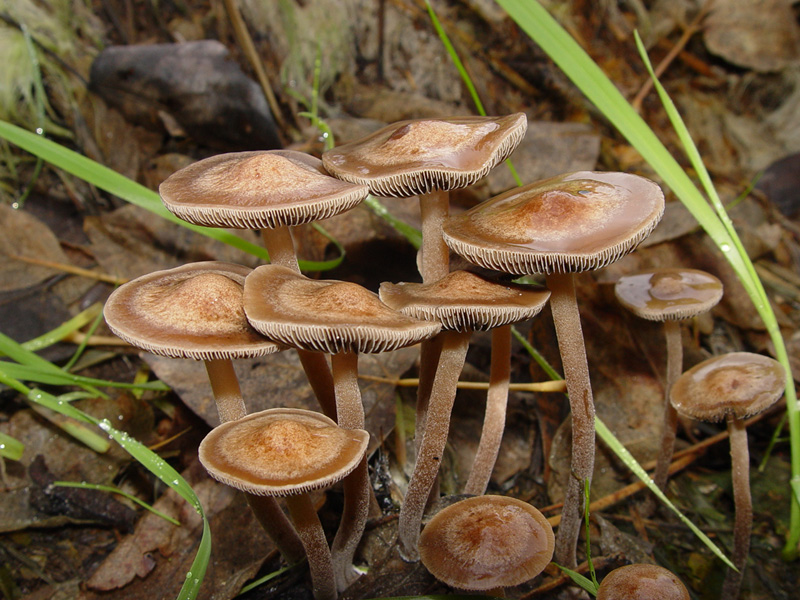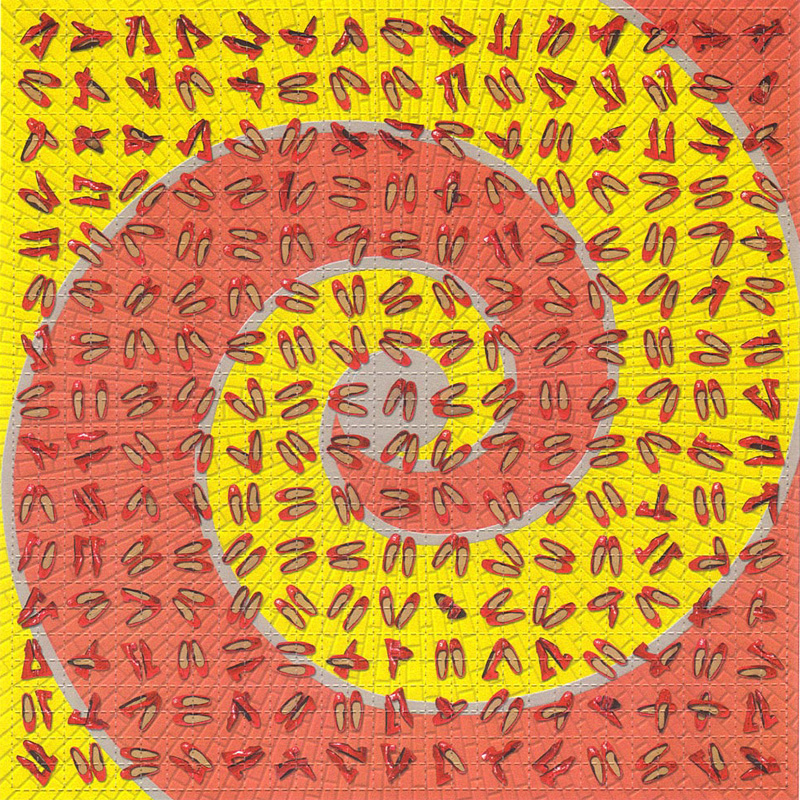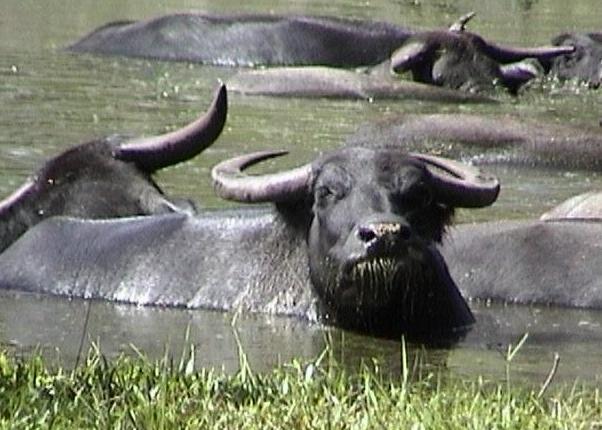|
Copelandia Cambodginiensis
''Panaeolus cambodginiensis'' is a potent hallucinogenic mushroom that contains psilocybin and psilocin. It was described in 1979 as ''Copelandia cambodginiensis''. Description The cap is less than 23 mm across, with a convex shape and an incurved margin when young, expanding to broadly convex. The cap surface is smooth, often cracking with irregular fissures. The gills are gray to black. The stem is tall, 4 mm thick, and slightly swollen at the base. The spores are black, shaped like lemons, smooth, measuring 11 x 8 μm. The entire mushroom quickly bruises blue where it is handled. It can be differentiated from the similar ''Panaeolus cyanescens'' by microscopic characteristics. Distribution and habitat ''Panaeolus cambodginiensis'' is mushroom that grows on dung of water buffalo. It was first described from Cambodia and is widespread throughout the Asian subtropics and Hawaii. Alkaloid content Strongly bluing species. Merlin and Allen (1993) reported the prese ... [...More Info...] [...Related Items...] OR: [Wikipedia] [Google] [Baidu] |
Rolf Singer
Rolf Singer (June 23, 1906 – January 18, 1994) was a German mycologist and Taxonomy (biology), taxonomist of gilled mushrooms (agarics). He wrote the book "The Agaricales in Modern Taxonomy (biology), Taxonomy". He fled to various countries during the Nazism, Nazi period, pursuing mycology in the Soviet Union, Argentina, and finally the United States, as mycologist at the Field Museum in Chicago. Career After receiving his Ph.D. at the University of Vienna in 1931 he worked in Munich. By 1933, however, Singer left Germany for Vienna due to the political deterioration in Germany. There he met his wife, Martha Singer. From Vienna, Singer and his wife went to Barcelona, Spain, where Singer was appointed assistant professor at the Autonomous University of Barcelona. Persecution by the Spanish authorities on behalf of the Germany, German government forced Singer to leave Spain for France in 1934. After a fellowship at the Museum d'Histoire Naturelle in Paris, Singer again moved, t ... [...More Info...] [...Related Items...] OR: [Wikipedia] [Google] [Baidu] |
Hawaii
Hawaii ( ; ) is an island U.S. state, state of the United States, in the Pacific Ocean about southwest of the U.S. mainland. One of the two Non-contiguous United States, non-contiguous U.S. states (along with Alaska), it is the only state not on the North American mainland, the only state that is an archipelago, and the only state in the tropics. Hawaii consists of 137 volcanic islands that comprise almost the entire Hawaiian Islands, Hawaiian archipelago (the exception, which is outside the state, is Midway Atoll). Spanning , the state is Physical geography, physiographically and Ethnology, ethnologically part of the Polynesian subregion of Oceania. Hawaii's ocean coastline is consequently the List of U.S. states and territories by coastline, fourth-longest in the U.S., at about . The eight main islands, from northwest to southeast, are Niihau, Niihau, Kauai, Kauai, Oahu, Oahu, Molokai, Molokai, Lanai, Lānai, Kahoʻolawe, Kahoolawe, Maui, and Hawaii (island), Hawaii, a ... [...More Info...] [...Related Items...] OR: [Wikipedia] [Google] [Baidu] |
Fungi Of Hawaii
A fungus (: fungi , , , or ; or funguses) is any member of the group of eukaryotic organisms that includes microorganisms such as yeasts and molds, as well as the more familiar mushrooms. These organisms are classified as one of the traditional eukaryotic kingdoms, along with Animalia, Plantae, and either Protista or Protozoa and Chromista. A characteristic that places fungi in a different kingdom from plants, bacteria, and some protists is chitin in their cell walls. Fungi, like animals, are heterotrophs; they acquire their food by absorbing dissolved molecules, typically by secreting digestive enzymes into their environment. Fungi do not photosynthesize. Growth is their means of mobility, except for spores (a few of which are flagellated), which may travel through the air or water. Fungi are the principal decomposers in ecological systems. These and other differences place fungi in a single group of related organisms, named the ''Eumycota'' (''true fungi'' or ''Eumycetes ... [...More Info...] [...Related Items...] OR: [Wikipedia] [Google] [Baidu] |
Psychedelic Tryptamine Carriers
Psychedelics are a subclass of hallucinogenic drugs whose primary effect is to trigger non-ordinary mental states (known as psychedelic experiences or "trips") and a perceived "expansion of consciousness". Also referred to as classic hallucinogens or serotonergic hallucinogens, the term ''psychedelic'' is sometimes used more broadly to include various other types of hallucinogens as well, such as those which are atypical or adjacent to psychedelia like salvia and MDMA, respectively. Classic psychedelics generally cause specific psychological, visual, and auditory changes, and oftentimes a substantially altered state of consciousness. They have had the largest influence on science and culture, and include mescaline, LSD, psilocybin, and DMT. There are a large number of both naturally occurring and synthetic serotonergic psychedelics. Most psychedelic drugs fall into one of the three families of chemical compounds: tryptamines, phenethylamines, or lysergamides. They produ ... [...More Info...] [...Related Items...] OR: [Wikipedia] [Google] [Baidu] |
Psychoactive Fungi
This is a list of Psychoactive drug, psychoactive plants, fungi, and animals. Plants Psychoactive plants include, but are not limited to, the following examples: * ''Cannabis'': cannabinoids * Tobacco: nicotine, anabasine, and other Nicotinic agonists, as well as beta-carboline alkaloids * Coca: cocaine, ecgonine and other coca alkaloids * Opium poppy: morphine, codeine, thebaine, papaverine, noscapine, and narceine * ''Salvia divinorum'': salvinorin A and other Salvinorins * Khat: cathine and cathinone * Kava: kavalactones * Nutmeg: myristicin * Nightshade (''Solanaceae'') plants containing hyoscyamine, atropine, and scopolamine: ** ''Datura'' ** Deadly nightshade (''Atropa belladonna'') ** Henbane (''Hyoscyamus niger'') ** Mandrake (''Mandragora officinarum'') ** Other ''Solanaceae'' * Psychoactive cacti, which contain mainly mescaline: ** Peyote ** Other ''Lophophora'' ** Peruvian torch cactus ** Trichocereus macrogonus, San Pedro cactus *** Trichocereus macrogonus, ''Trich ... [...More Info...] [...Related Items...] OR: [Wikipedia] [Google] [Baidu] |
Panaeolus
''Panaeolus'' is a genus of small, black-spored, saprotrophic agarics. The word ''Panaeolus'' is Greek for "all variegated", alluding to the spotted gills of the mushrooms produced. Characteristics These fungi are mostly dung and grassland species, some of which are quite common in Europe and North America. The gills of ''Panaeolus'' do not deliquesce (liquefy) as do the members of the related genera '' Coprinellus'' and '' Coprinopsis''. Members of ''Panaeolus'' can also be mistaken for ''Psathyrella'', however the latter genus is usually found growing on wood or lignin-enriched soils and has brittle stipes. The gills of these mushrooms are black or grey and have a spotty, speckled or cloudy appearance, caused by the way that the dark spores ripen together in tiny patches on the gill surface; different patches darken at different times. The spores are smooth. The closely related genus '' Panaeolina'' shares the spotted gills but they are dark brown (not black) and the ... [...More Info...] [...Related Items...] OR: [Wikipedia] [Google] [Baidu] |
List Of Panaeolus Species
The following is a list of the about 98 ''Panaeolus'' mushroom species: * ''Panaeolus acidus'' * ''Panaeolus acuminatus'' * ''Panaeolus affinis'' * ''Panaeolus africanus'', psychoactive * ''Panaeolus albellus'' * ''Panaeolus albidocinereus'' * ''Panaeolus albovelutinus'' * ''Panaeolus alcis'' * ''Panaeolus alveolatus'' * ''Panaeolus annulatus'' * ''Panaeolus anomalus'' * ''Panaeolus antillarum'' * ''Panaeolus atomatus'' * ''Panaeolus atrobalteatus'' * ''Panaeolus axfordii'', psychoactive * ''Panaeolus bernicis'' * ''Panaeolus bisporus'', psychoactive * ''Panaeolus bolombensis'' * ''Panaeolus bubalorum'' * ''Panaeolus cambodginiensis'', psychoactive * ''Panaeolus campanulatus'' (=''Panaeolus papilionaceus'' accepted name) * ''Panaeolus campanuloides'' * ''Panaeolus castaneifolius'' (=''Panaeolus olivaceus'' accepted name), psychoactive * ''Panaeolus cinctulus'' (Bolton) Britzelm., psychoactive * ''Panaeolus chlorocystis'' * ''Panaeolus cinereofuscus'' * ''Panaeolus clelandii'' * ... [...More Info...] [...Related Items...] OR: [Wikipedia] [Google] [Baidu] |
Cambodia
Cambodia, officially the Kingdom of Cambodia, is a country in Southeast Asia on the Mainland Southeast Asia, Indochinese Peninsula. It is bordered by Thailand to the northwest, Laos to the north, and Vietnam to the east, and has a coastline along the Gulf of Thailand in the southwest. It spans an area of , dominated by a low-lying plain and the confluence of the Mekong river and Tonlé Sap, Southeast Asia's largest lake. It is dominated by a tropical climate and is rich in biodiversity. Cambodia has a population of about 17 million people, the majority of which are ethnically Khmer people, Khmer. Its capital and most populous city is Phnom Penh, followed by Siem Reap and Battambang. In 802 AD, Jayavarman II declared himself king, uniting the warring Khmer princes of Chenla Kingdom, Chenla under the name "Kambuja".Chandler, David P. (1992) ''History of Cambodia''. Boulder, CO: Westview Press, . This marked the beginning of the Khmer Empire. The Indianised kingdom facilitated ... [...More Info...] [...Related Items...] OR: [Wikipedia] [Google] [Baidu] |
Hallucinogenic
Hallucinogens, also known as psychedelics, entheogens, or historically as psychotomimetics, are a large and diverse class of psychoactive drugs that can produce altered states of consciousness characterized by major alterations in thought, mood, and perception as well as other changes. Hallucinogens are often categorized as either being psychedelics, dissociatives, or deliriants, but not all hallucinogens fall into these three classes. Examples of hallucinogens include psychedelics or serotonin 5-HT2A receptor agonists like LSD, psilocybin, mescaline, and DMT; dissociatives or NMDA receptor antagonists like ketamine, PCP, DXM, and nitrous oxide; deliriants or antimuscarinics like scopolamine and diphenhydramine; cannabinoids or cannabinoid CB1 receptor agonists like THC, nabilone, and JWH-018; κ-opioid receptor agonists like salvinorin A and pentazocine; GABAA receptor agonists like muscimol and gaboxadol; and oneirogens like ibogaine and harmaline, among others. E ... [...More Info...] [...Related Items...] OR: [Wikipedia] [Google] [Baidu] |
Water Buffalo
The water buffalo (''Bubalus bubalis''), also called domestic water buffalo, Asian water buffalo and Asiatic water buffalo, is a large bovid originating in the Indian subcontinent and Southeast Asia. Today, it is also kept in Italy, the Balkans, Australia, North America, South America and some African countries. Two extant Type (biology), types of water buffalo are recognized, based on Morphology (biology), morphological and Ethology, behavioural criteria: the river buffalo of the Indian subcontinent and further west to the Balkans, Egypt and Italy; and the swamp buffalo from Assam in the west through Southeast Asia to the Yangtze Valley of China in the east. The wild water buffalo (''Bubalus arnee'') is most probably the ancestor of the domestic water buffalo. Results of a phylogenetic study indicate that the river-type water buffalo probably originated in western India and was domesticated about 6,300 years ago, whereas the swamp-type originated independently from Mainland Sou ... [...More Info...] [...Related Items...] OR: [Wikipedia] [Google] [Baidu] |





